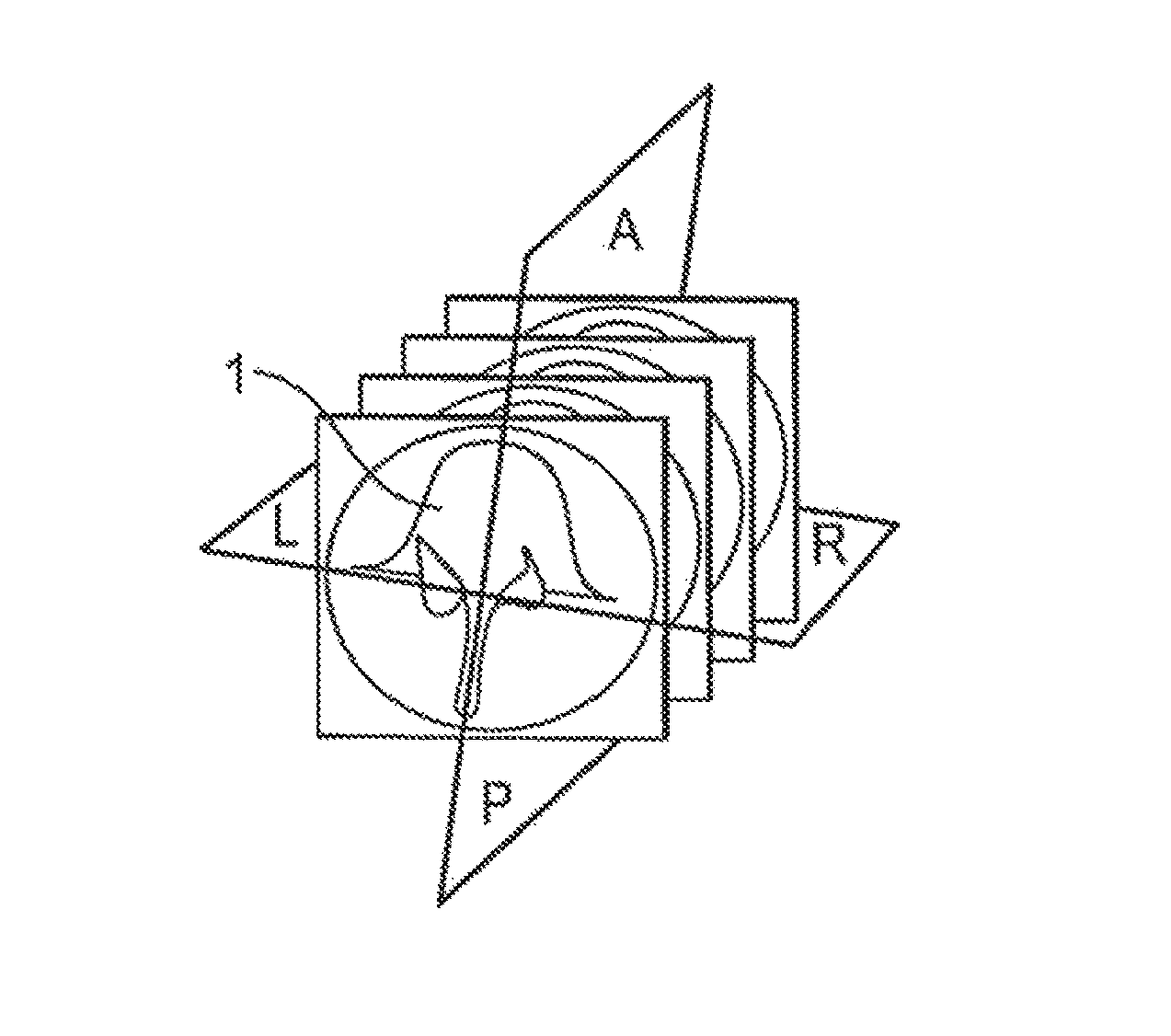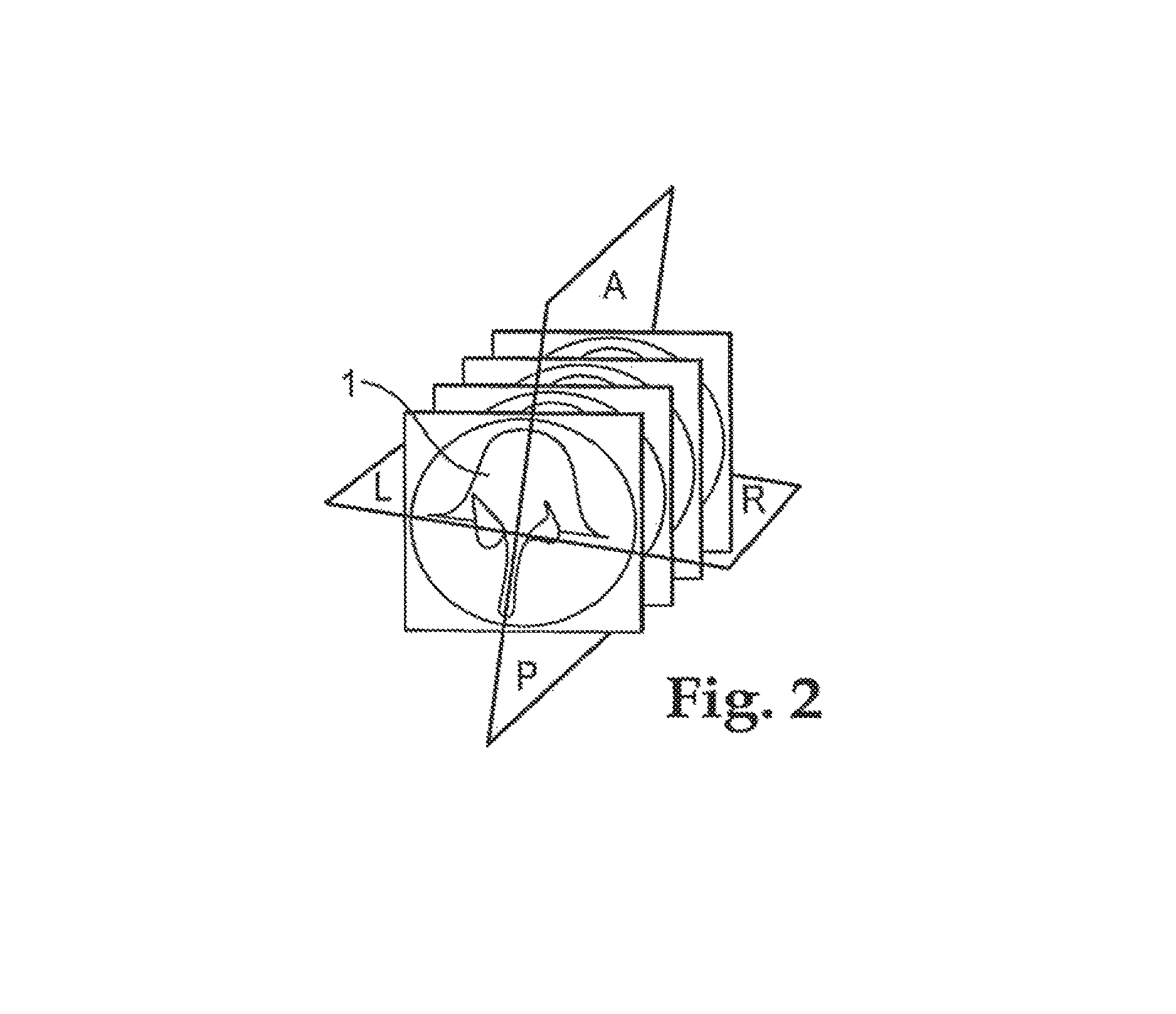Method for verifying the relative position of bone structures
a relative position and bone structure technology, applied in the field of bone structure relative position verification, can solve the problems of obstructive devices and presupposing damage to bone structures, and achieve the effect of low burden on patients and cost-effectiveness
- Summary
- Abstract
- Description
- Claims
- Application Information
AI Technical Summary
Benefits of technology
Problems solved by technology
Method used
Image
Examples
Embodiment Construction
[0029]FIG. 1 schematically shows two bone structures 1 and 2, wherein a two-dimensional representation has been chosen in order to illustrate the basic principle of the method. The bone structures 1 and 2 are shown as rectangles, wherein the bone structure 1 serves as the reference. The representation of the bone structure 2 in a continuous line shows it in a first position which has been ascertained by means of a computer tomograph. The reference frame assigned to the bone structure 1 is a Cartesian coordinate system comprising the axes X1 and Y1; the reference frame assigned to the bone structure 2 is a Cartesian coordinate system comprising the axes X2 and Y2. A three-dimensional dataset has been generated with the aid of the computer tomograph and then segmented into two segments. The first segment represents the bone structure 1, and the second segment represents the bone structure 2. The segments serve as a template for subsequently locating the actual relative position of the...
PUM
 Login to View More
Login to View More Abstract
Description
Claims
Application Information
 Login to View More
Login to View More - R&D
- Intellectual Property
- Life Sciences
- Materials
- Tech Scout
- Unparalleled Data Quality
- Higher Quality Content
- 60% Fewer Hallucinations
Browse by: Latest US Patents, China's latest patents, Technical Efficacy Thesaurus, Application Domain, Technology Topic, Popular Technical Reports.
© 2025 PatSnap. All rights reserved.Legal|Privacy policy|Modern Slavery Act Transparency Statement|Sitemap|About US| Contact US: help@patsnap.com



